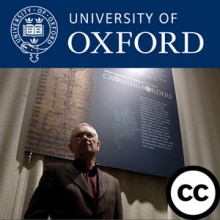
Relevant Links
The Bodleian Library's winter 2009/10 exhibition tells the story of how together Jews, Christians and Muslims have contributed to the development of the book. Crossing Borders: Hebrew Manuscripts as a Meeting-place of Cultures draws on the Bodleian's Hebrew holdings, one of the largest and most important collections of Hebrew manuscripts in the world.
Covering a time span of 300 years between the thirteenth century and fifteenth century, the exhibition brings to light different aspects of Jewish life in a non-Jewish medieval society.
The social and cultural interaction between Jews and non-Jews in both the Muslim and Christian world is mirrored in the blending of the inherent elements of the manuscript such as decorative patterns, writing styles, script types and text genres. As a result Hebrew manuscripts produced in different geo-cultural regions look quite different, showing greater similarities to the non-Hebrew books produced in the same region than to each other.
By importing elements of the host culture, the Hebrew manuscripts are proof of coexistence and cultural affinity, as well as practical cooperation between Jews and their non-Jewish neighbours in the Middle Ages. The assortment of manuscripts is not restricted to religious text, but expend to literary and scientific works as well.
| # | Episode Title | Description | People | Date | |
|---|---|---|---|---|---|
| 7 | Creative Commons | Introduction to Crossing Borders | An introduction to the Crossing Borders exhibition. The exhibition tells the story of how Jews, Christians and Muslims have contributed to the development of the book. | Piet van Boxel | 06 May 2010 |
| 6 | Creative Commons | From Roll to Codex | Piet explains codices, the oldest manuscripts in book form, looking in particular at a fragment of the Hebrew text of the book of Ecclesiasticus (ch. 40) from the Cairo Genizah, and the four Gospels in Syriac. | Piet van Boxel | 06 May 2010 |
| 5 | Creative Commons | Arabic Art Forms in Spanish Book Production | Piet explains Arabic design and illustration in Spanish books, looking in particular at the Kennicott Bible, produced in La Coruna, Spain, in 1476. | Piet van Boxel | 10 May 2010 |
| 4 | Creative Commons | Hebrew Prayer Books for Public Use | Piet looks at the three great Bodleian mahzorim (large and elaborately decorated prayer books for the festivals), which were illuminated by Christian painters in collaboration with and under the supervision of Jewish scribes. | Piet van Boxel | 10 May 2010 |
| 3 | Creative Commons | User-produced Hebrew Prayer Books and Shared Iconography | Some Hebrew manuscripts were produced in Christian workshops, others were made by Jewish artists themselves for their own use. Piet looks at examples of these and explores the shared iconography between Christian and Jewish faiths, such as the unicorn. | Piet van Boxel | 10 May 2010 |
| 2 | Creative Commons | Sciences | Piet looks at how the works of famous ancient thinkers such as Aristotle, Hippocrates, Euclid or Ptolemy traveled from culture to culture and formed the basis of Muslim, Christian and Jewish science and philosophy alike. | Piet van Boxel | 10 May 2010 |
| 1 | Creative Commons | Conclusion to Crossing Borders | The conclusion to the Crossing Borders exhibition. The exhibition tells the story of how Jews, Christians and Muslims have contributed to the development of the book. | Piet van Boxel | 10 May 2010 |
